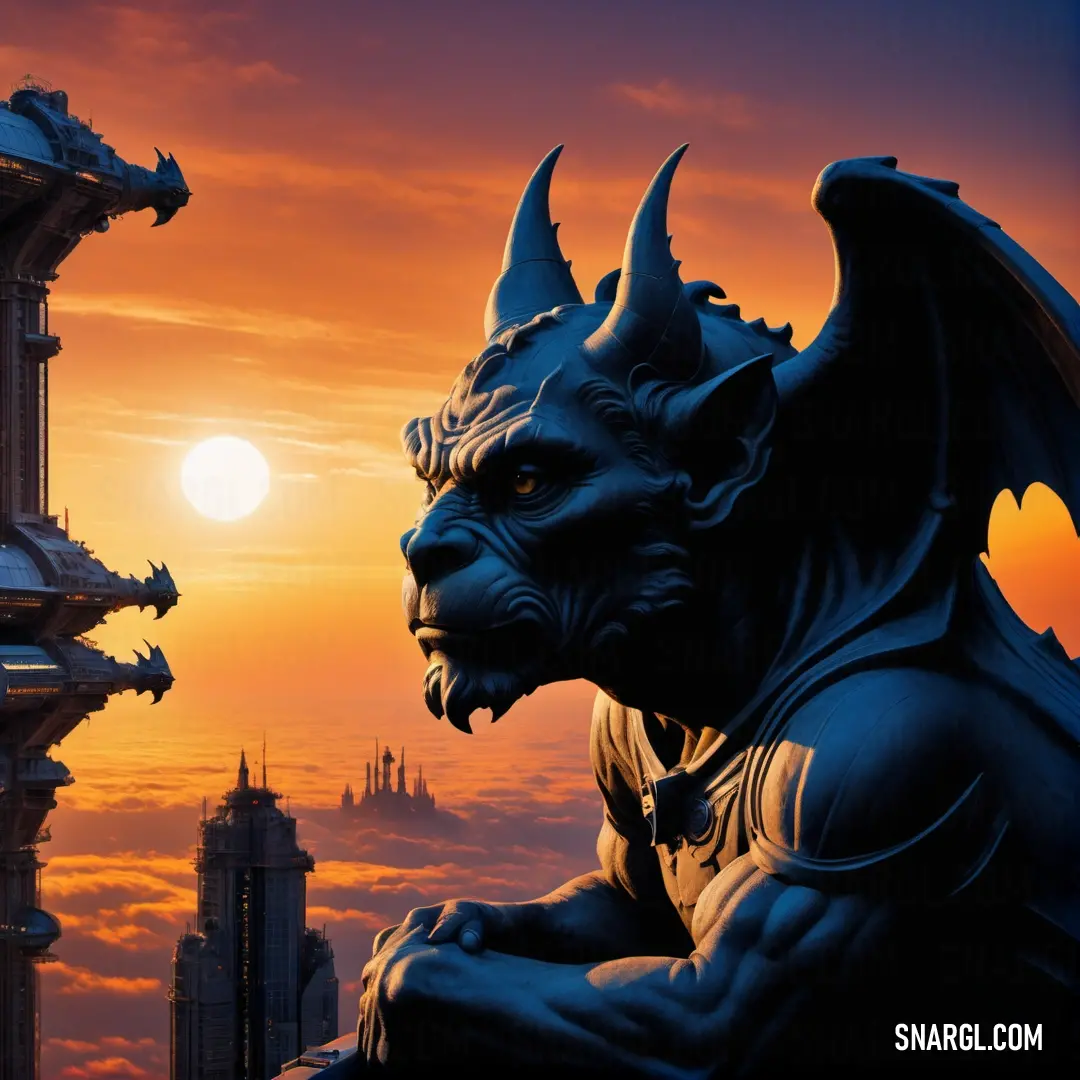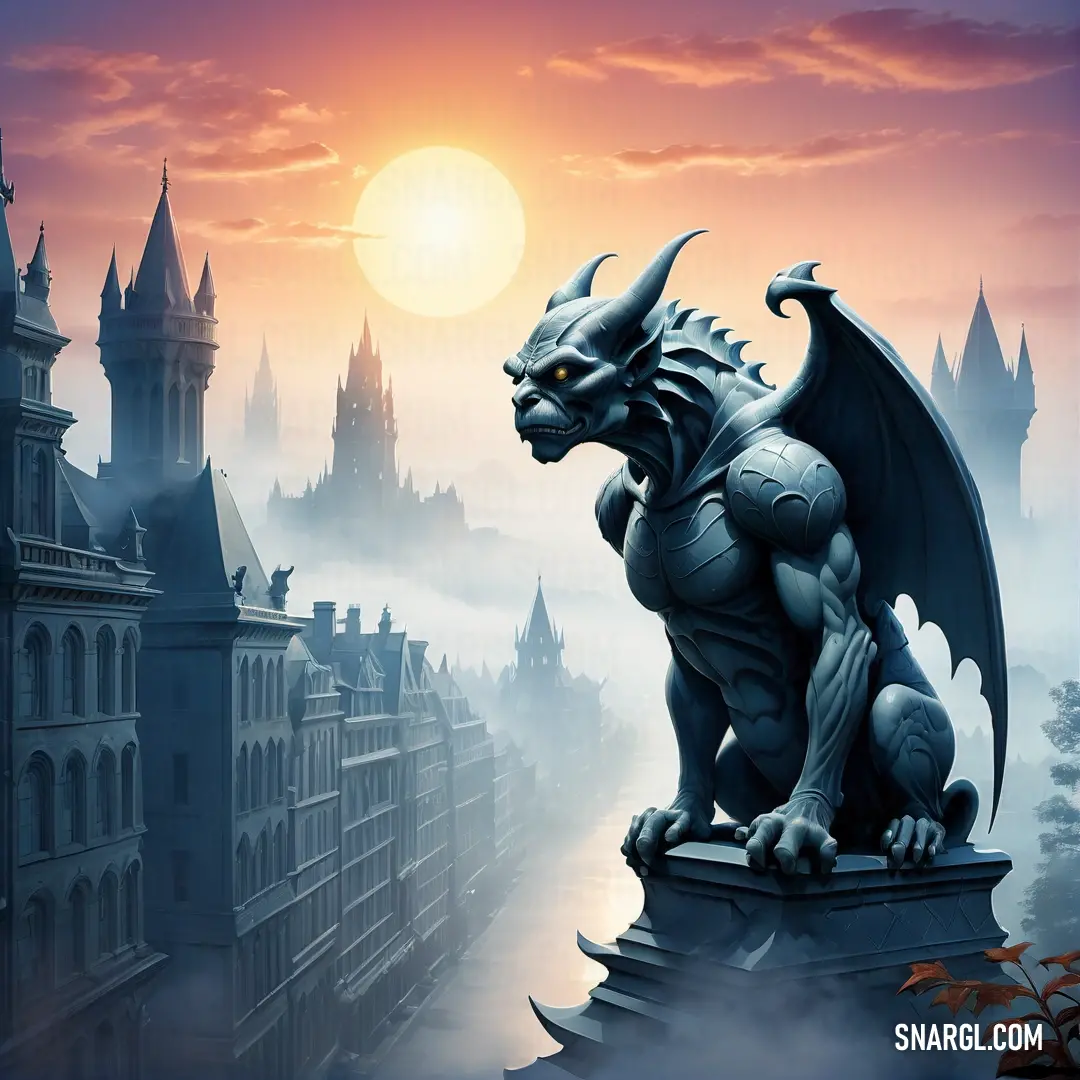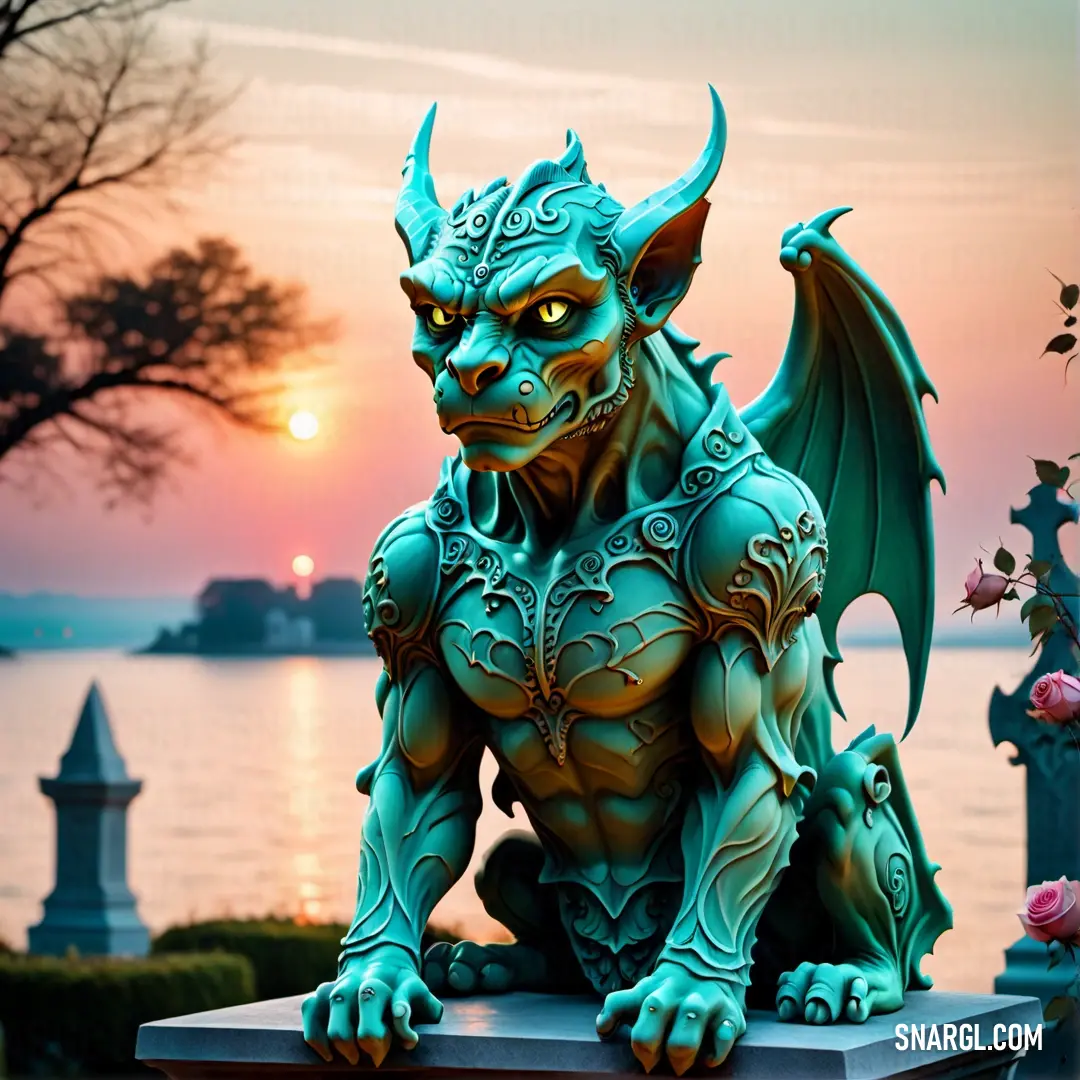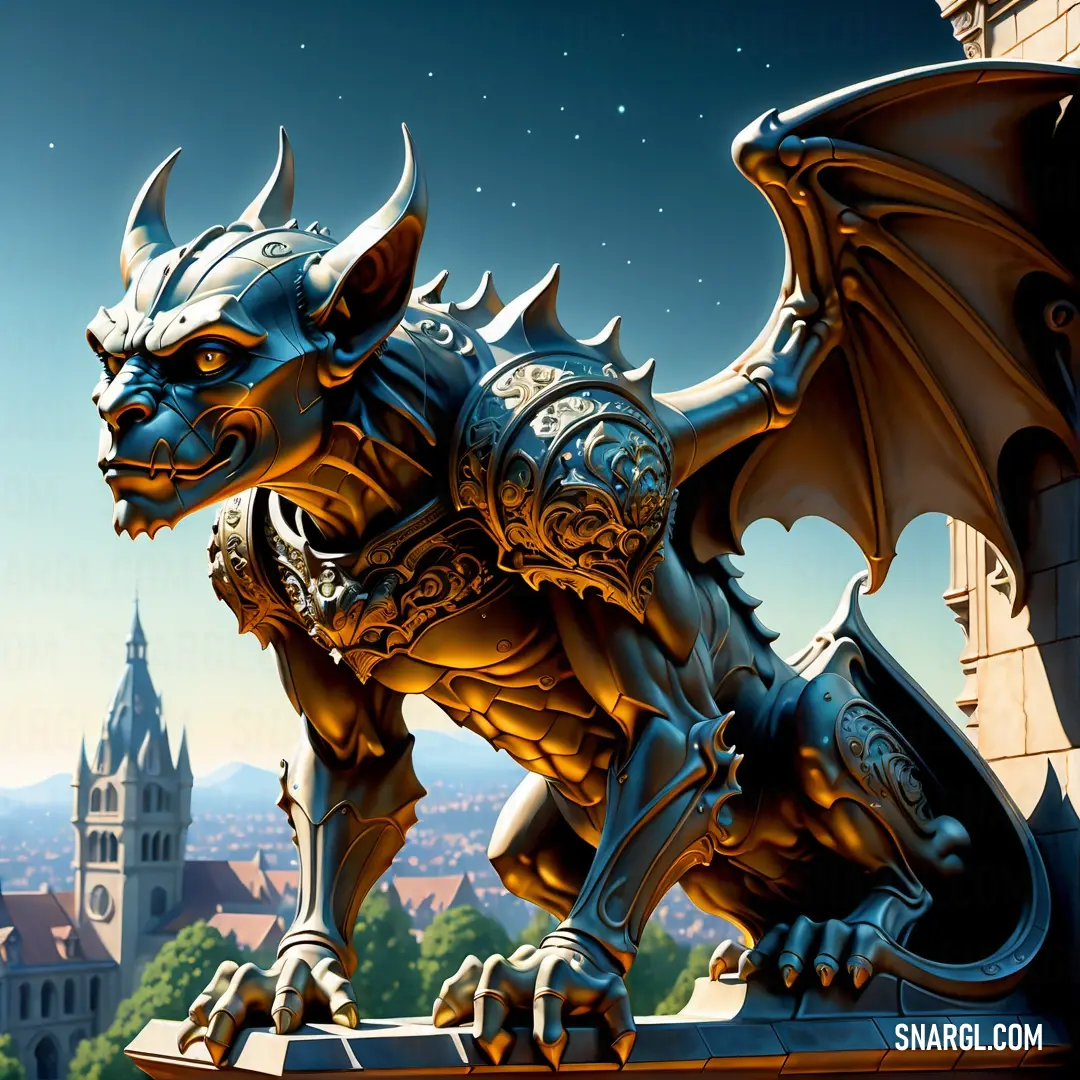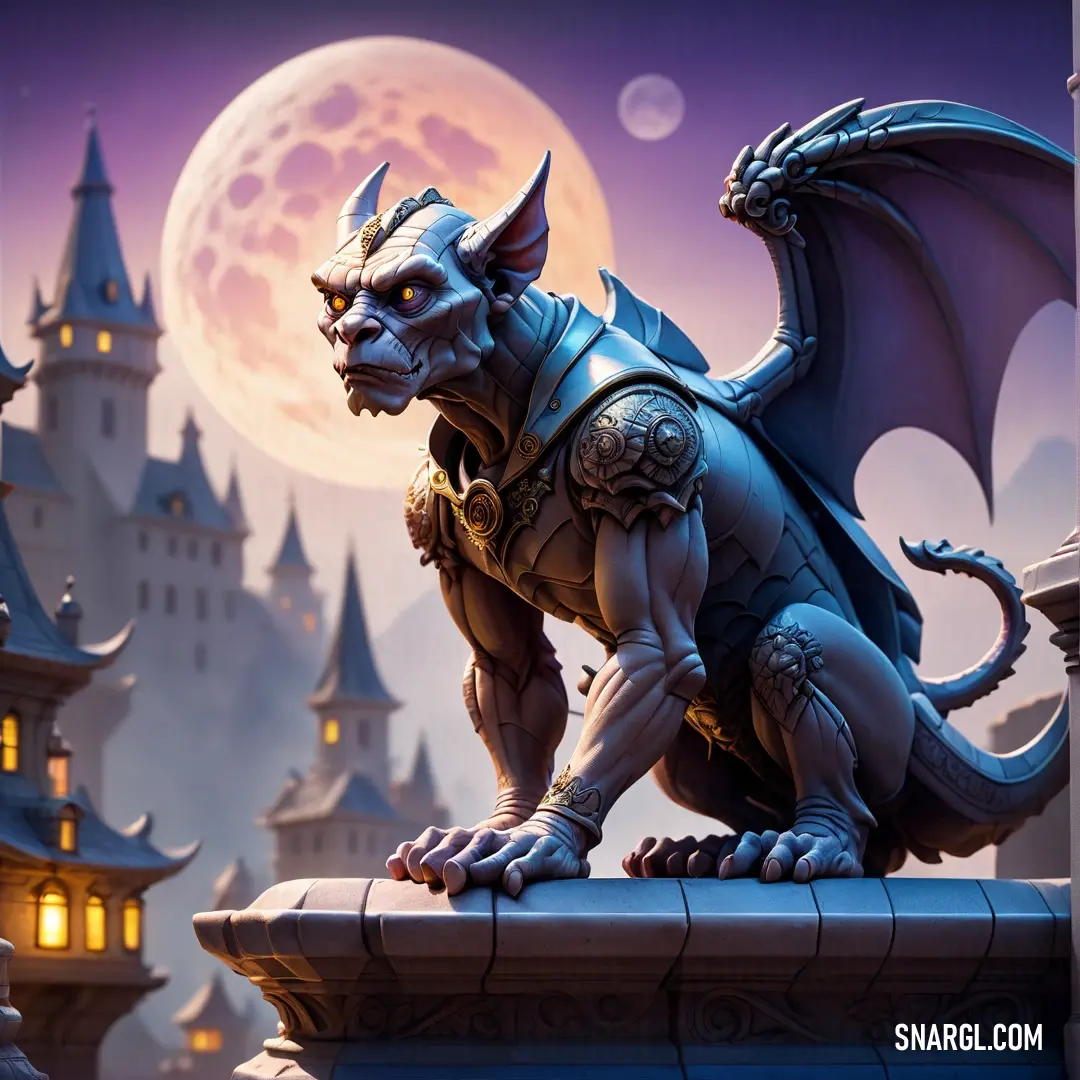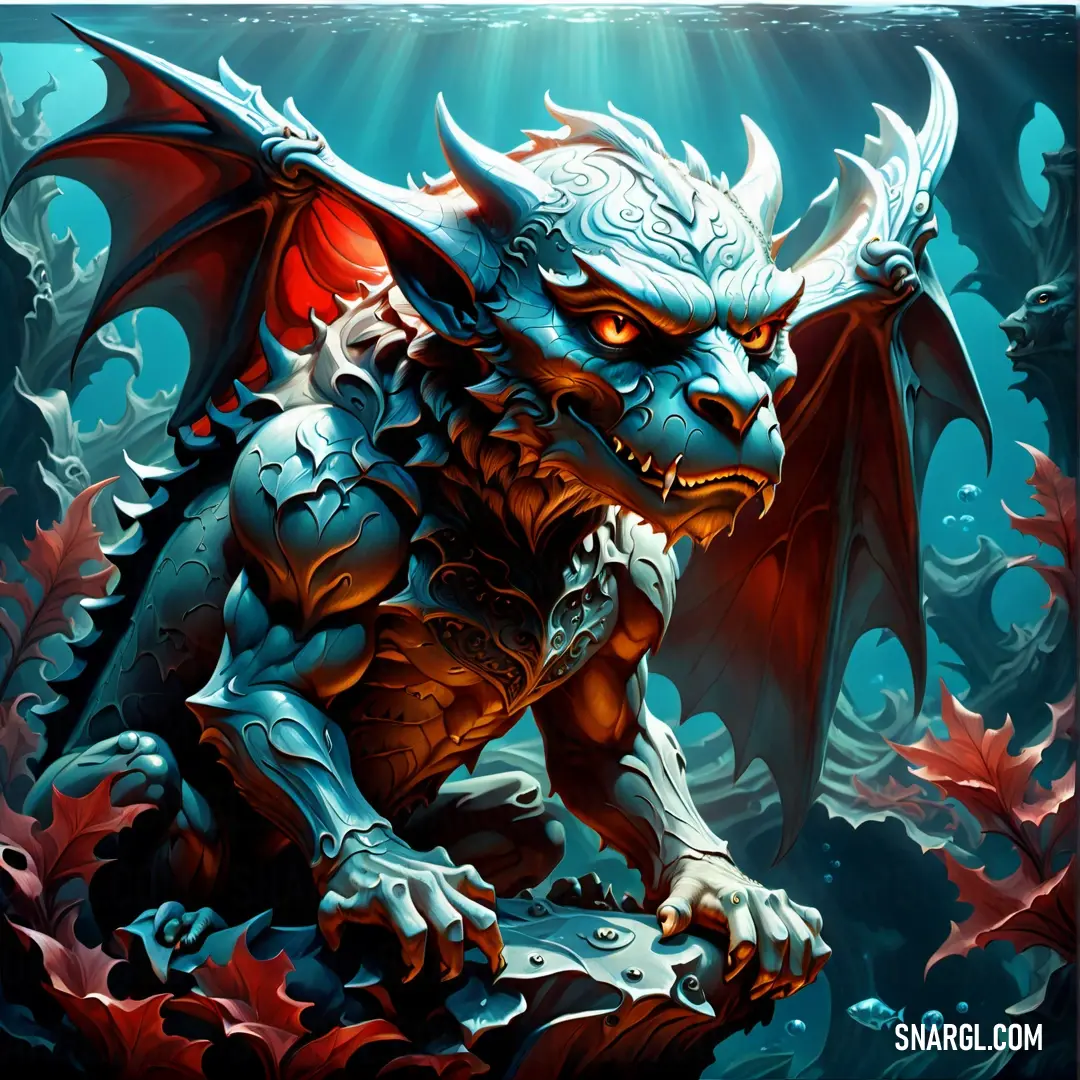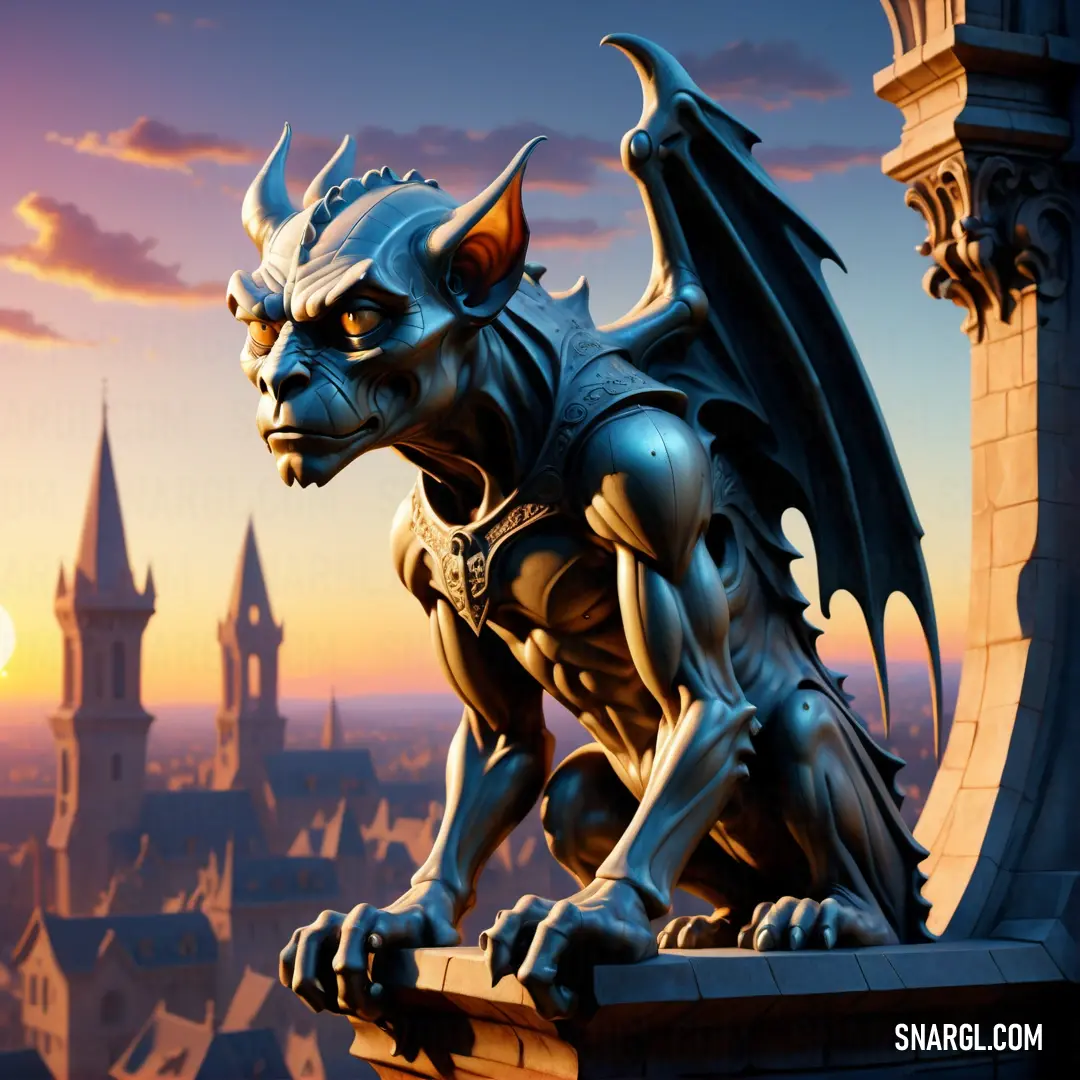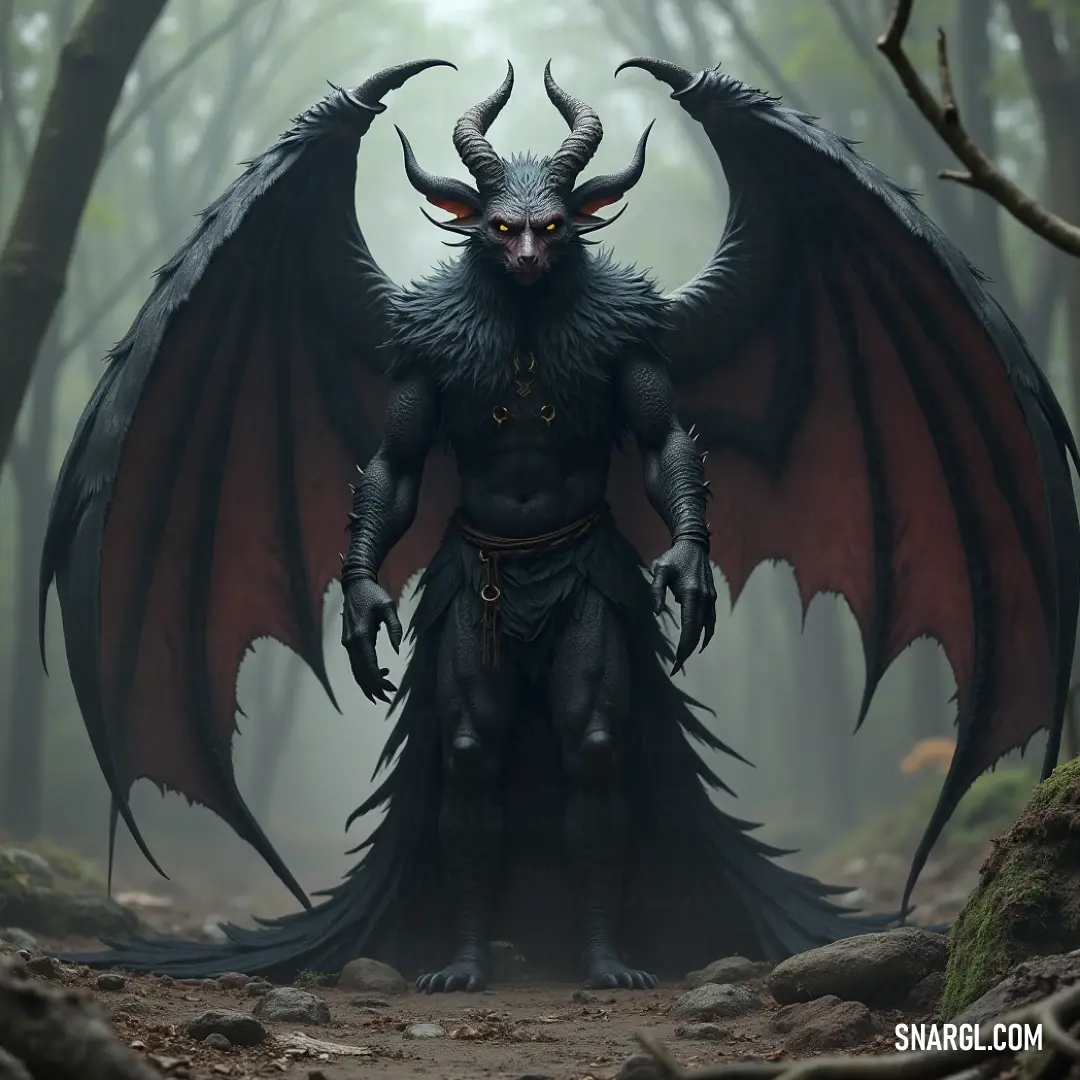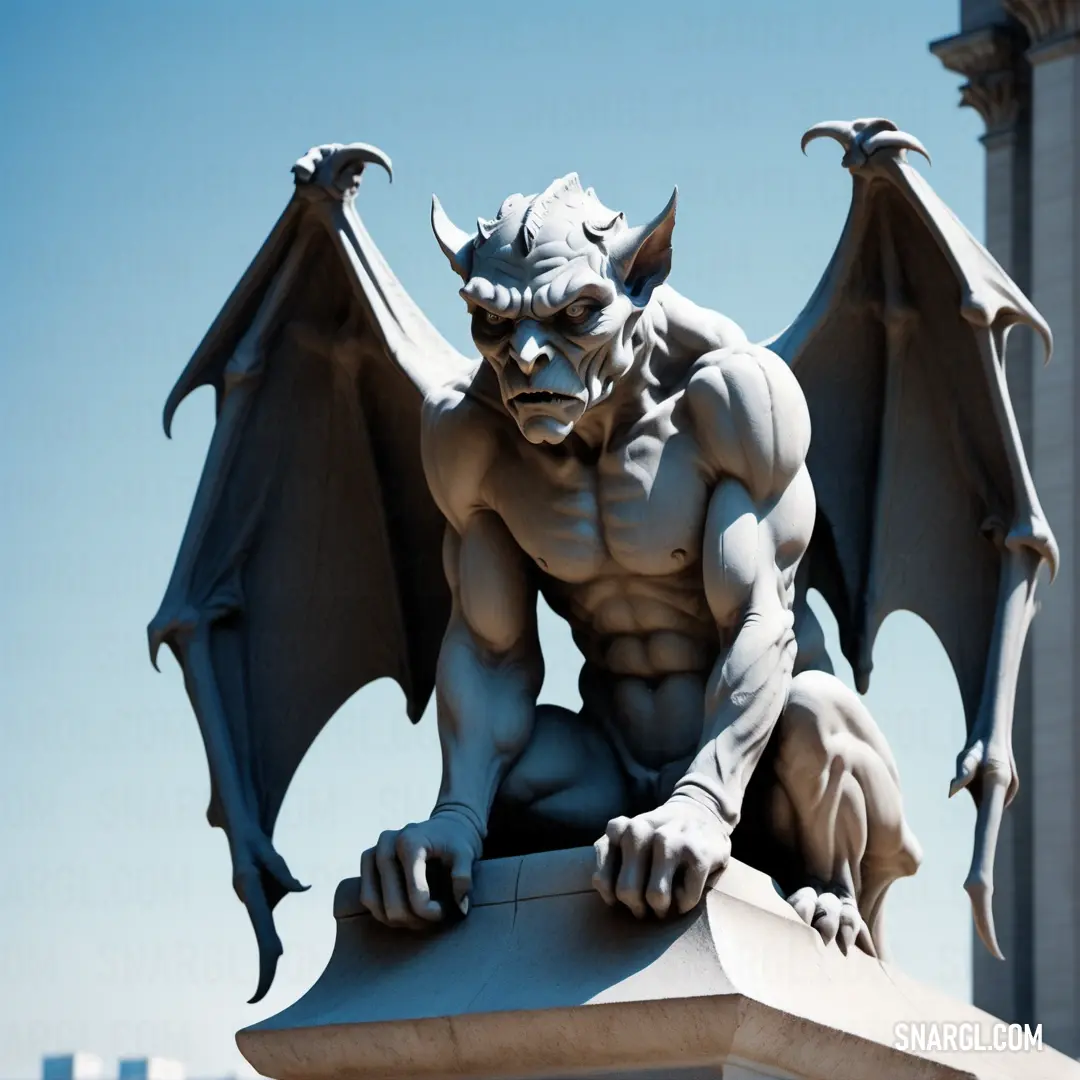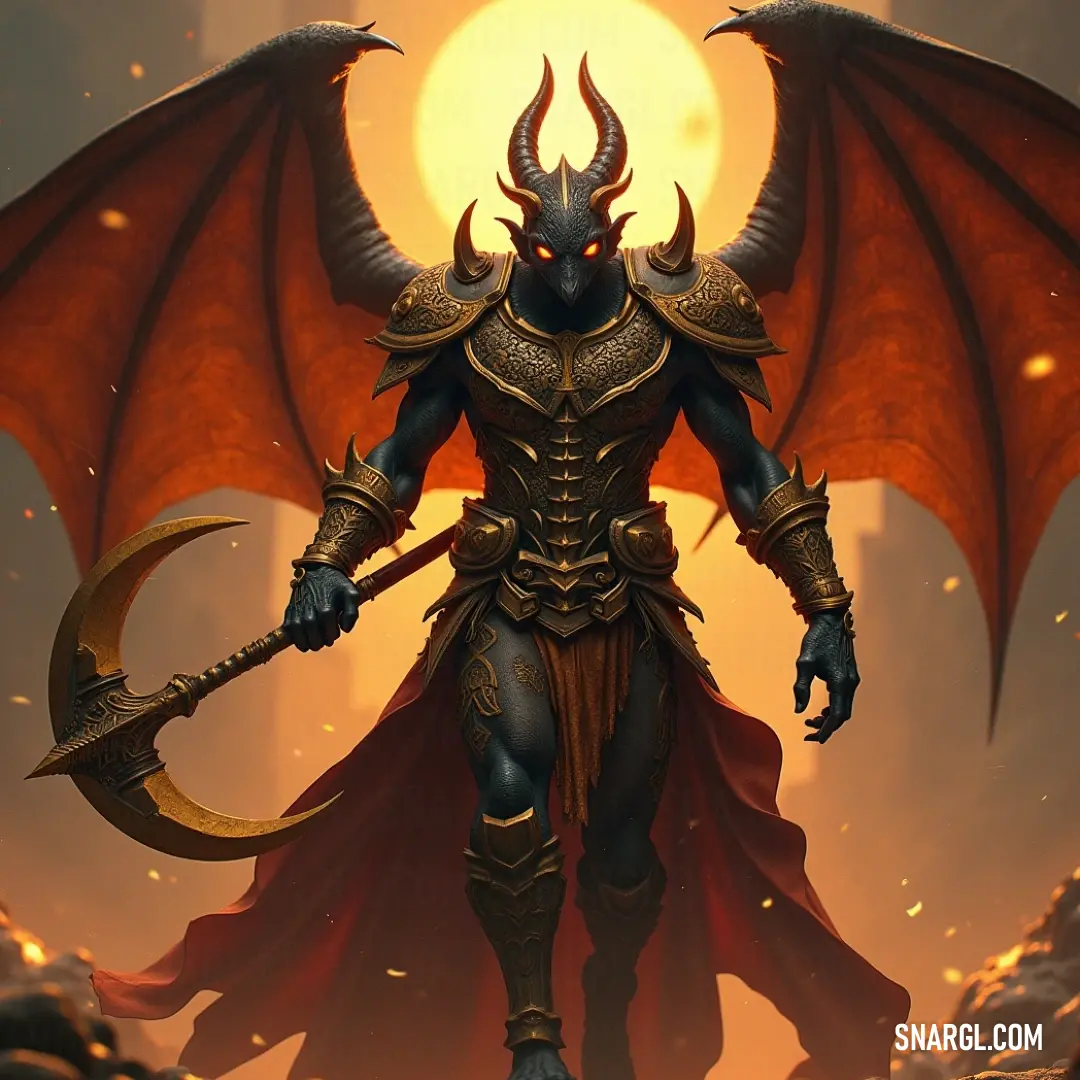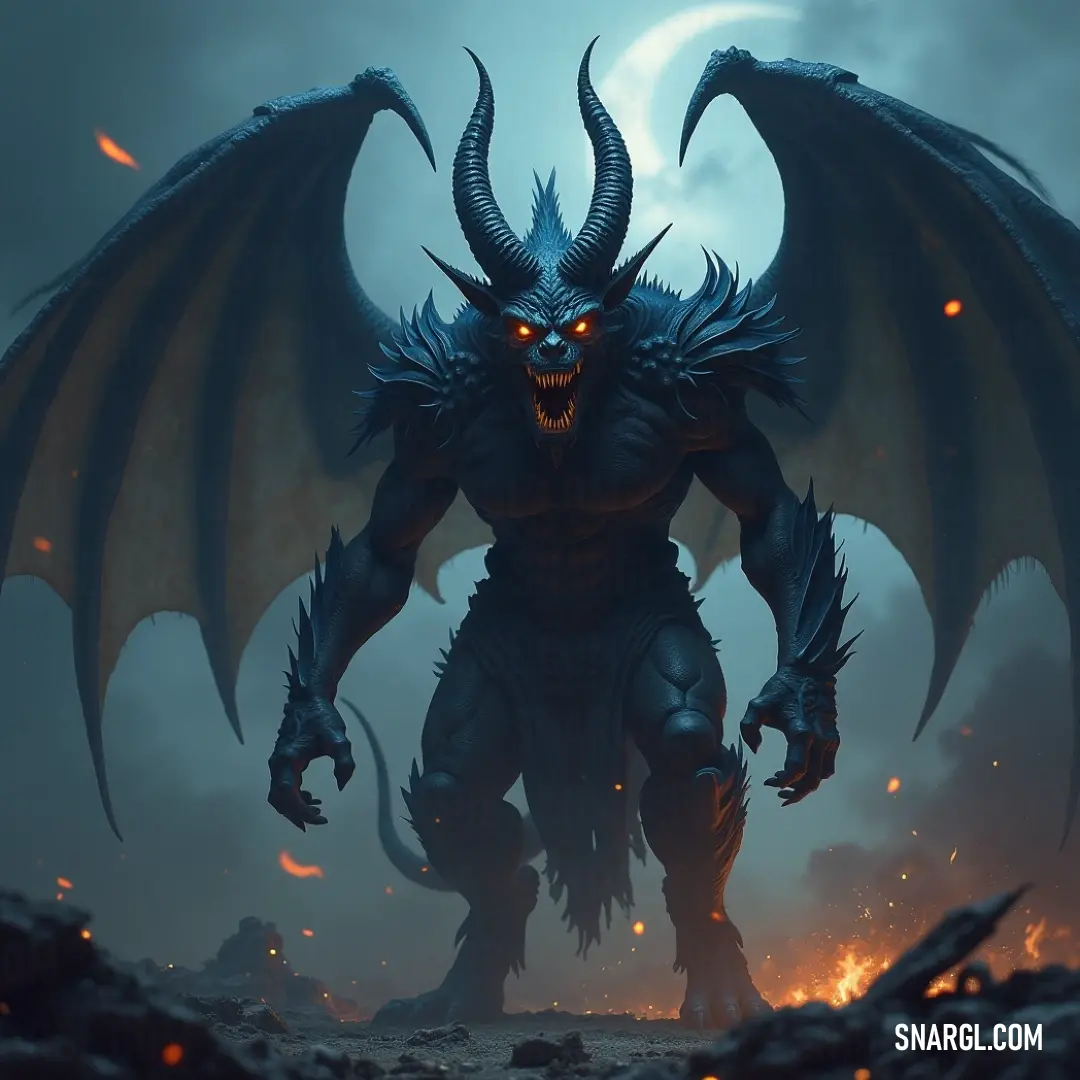Long time ago, in the heart of the ancient city of Eldoria, where towering spires touched the heavens and cobblestone streets wove like veins through the landscape, lived a young gargoyle named Garon. Unlike his stone kin who remained statuesque for centuries, Garon was different. His granite skin, though still marred with the cracks of age, had an unusual luster, and his eyes glimmered with an inner light that seemed almost... alive.
Garon was restless, feeling the pull of something beyond the city's confines. Legends spoke of the Astral Convergence, a rare celestial event that occurred once every millennium when the planets aligned perfectly, bestowing great power and insight upon those who could harness it. Garon longed to experience this convergence, believing it would reveal his true purpose.
In the eerie quiet of a foggy morning, the gargoyle’s wings seem to flap in the unseen wind, its vigilant eyes scanning the city below.
One fateful evening, as twilight cloaked Eldoria in shades of purple and gold, Garon witnessed a strange phenomenon. A luminous comet streaked across the sky, and as it passed, it left behind a trail of shimmering stardust. Instinctively, Garon knew this was a sign. Determined, he leaped from his perch atop the highest tower and unfurled his wings, soaring through the city's labyrinthine streets.
His journey led him to the Whispering Woods, a sprawling forest rumored to be enchanted. The trees here were ancient and gnarled, their leaves whispering secrets of the past. Guided by the comet's trail, Garon stumbled upon an ethereal glade, where a silver pool reflected the constellations above. Beside it, a robed figure awaited him - a mystical seer known as Aeloria.
Aeloria, with eyes like pools of liquid moonlight, revealed that the Astral Convergence would unlock the ancient Gate of Stars, hidden deep within the Forest of Shadows, a place both wondrous and perilous. The gate, she explained, was the key to accessing the Celestial Vault, a repository of ancient knowledge and power. However, only those of pure heart and unyielding spirit could pass through.

The gargoyle gazes out into the vast, fading light of the sunset, its stone features bathed in a golden glow. The city below is swallowed by twilight as the creature remains a silent sentinel in the changing light.
Garon's journey to the Forest of Shadows was fraught with challenges. The forest was alive, and its denizens - sentient vines, spectral wolves, and mischievous sprites - tested his resolve at every turn. Each obstacle seemed to mirror his own fears and doubts, but Garon pressed on, driven by the vision of the Convergence.
After enduring countless trials, Garon finally reached the Gate of Stars. It was a massive, ornate structure covered in celestial glyphs that glowed with an otherworldly light. However, the gate remained shut, guarded by a formidable celestial beast - a dragon made of stardust and fire.
With a deep breath, Garon approached the dragon, whose eyes blazed like supernovae. The beast spoke in a voice that resonated like thunder, demanding to know why Garon sought entry. Garon revealed his desire to understand his true purpose and to gain wisdom that could help his city.
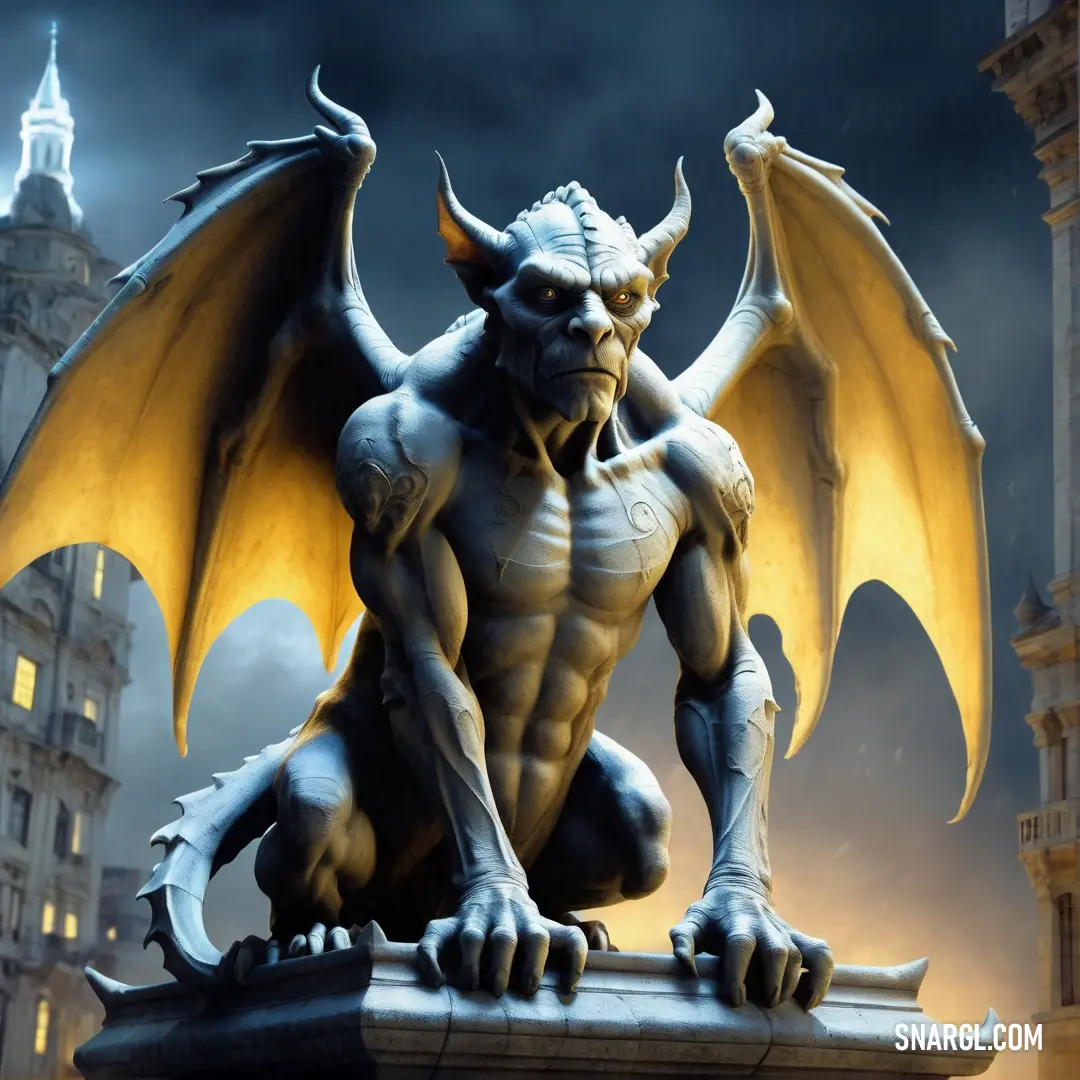
Perched high on a ledge, this stone guardian overlooks a timeless scene, with the clock tower reminding us of the passing of time.
The dragon, sensing the sincerity in Garon's heart, set a final test: a challenge of courage and empathy. Garon was to journey into the heart of the gate and retrieve a celestial orb. Inside the gate, he faced illusions of his deepest fears and insecurities but remained steadfast. His compassion and bravery guided him through, allowing him to grasp the orb, which radiated a warm, comforting light.
When Garon emerged, the dragon allowed him to enter the Celestial Vault. Within, he found not only ancient knowledge but also a profound truth: the purpose of his quest was not merely to gain power but to learn that true strength comes from understanding and compassion. Garon realized his role was to be a guardian of wisdom, sharing what he had learned to foster harmony and growth.
Returning to Eldoria, Garon shared his newfound wisdom. His journey transformed him from a restless youth into a beacon of hope and guidance for his people. The Celestial Convergence, it turned out, had illuminated not just the night sky but the path Garon was destined to follow. His tale became a legend, inspiring future generations to seek their own truths and embrace their inner light.
